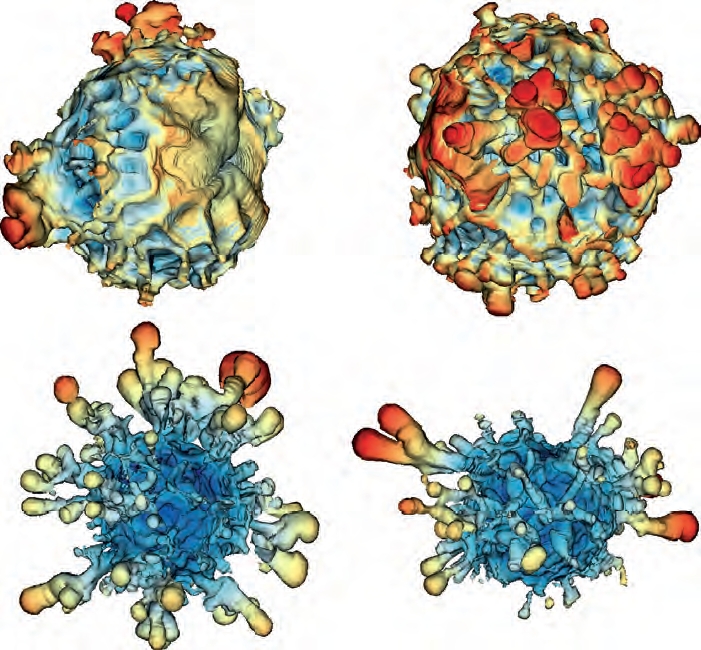ASTROPHYSICS
Three-dimensional Simulations of Supernova Explosions
Principal Investigator:
Ewald Müller
Affiliation:
Max-Planck-Institut für Astrophysik, Garching/München (Germany)
Local Project ID:
pr86la
HPC Platform used:
SuperMUC of LRZ
Date published:
Massive stars end their lives as core-collapse supernovae when the stellar core implodes to a neutron star and the stellar envelope is expelled. Using computer models, we have simulated the mixing processes occurring during the explosion without assuming any symmetry.
Massive stars end their lives as core-collapse supernovae when the stellar core implodes to a neutron star and the stellar envelope is expelled. Using computer models, we have simulated the mixing processes occurring during the explosion without assuming any symmetry. These 3D models show, in accordance with observations and older simplified models, that heavy elements are mixed outwards in the exploding star, while light elements are mixed inwards. According to a new and very interesting finding, the spatial distribution of the ejected material depends on the density stratification of the exploding star and on the explosion energy (Fig.1). Thus, a combination of simulation and observation should allow one to constrain the structure of the progenitor stars.

Figure 1: Spatial structure of the ejected heavy elements for different stellar models and explosion energies. The velocities range from several hundred (blue) to several thousend kilometers per second (red).
Copyright: Max-Planck-Insitut für AstrophysikScientific Contact:
PD Dr. Ewald Müller, Dr. Annop Wongwathanarat, PD Dr. Hans-Thomas Janka
Max-Planck-Institut für Astrophysik
Karl-Schwarzschild-Str. 1, D-85748 Garching – e-mail: emueller@MPA-Garching.MPG.de